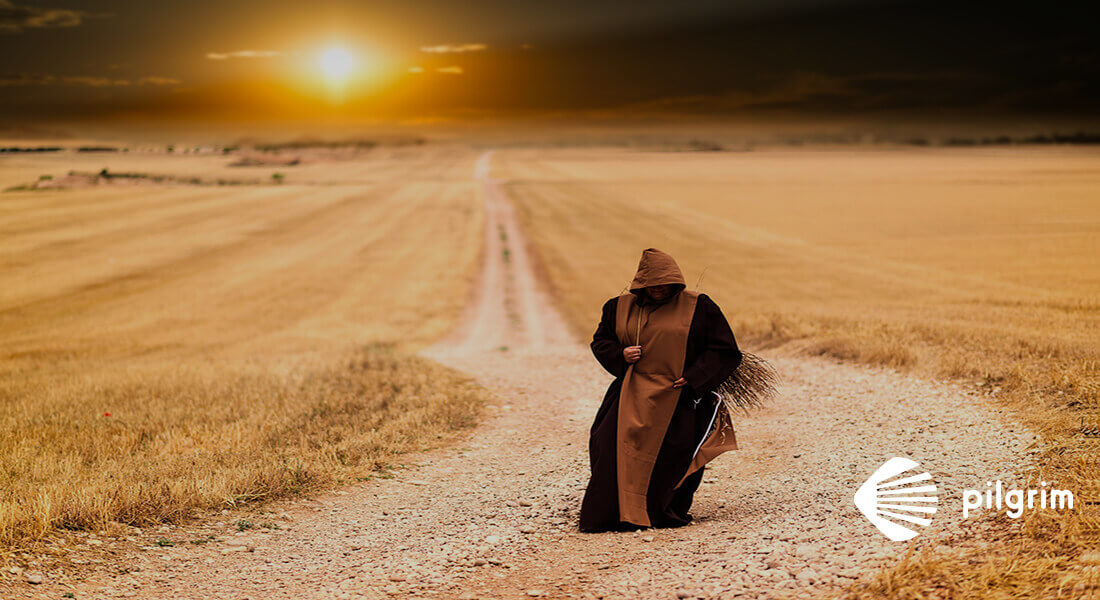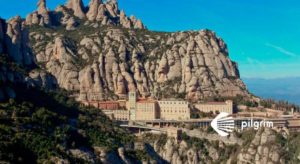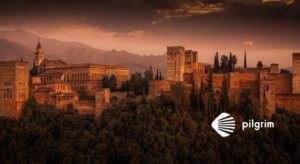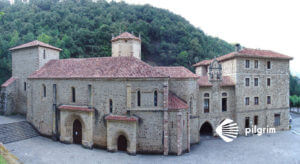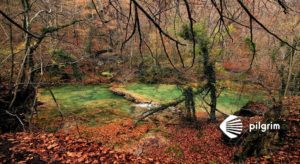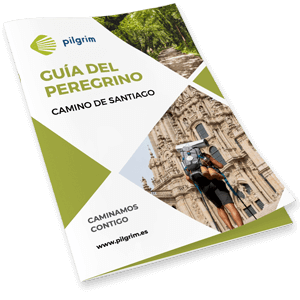There are as many alternative routes of the Camino de Santiago as there are pilgrims who pass through them. This is why there are some Jacobean routes that fall into oblivion, such as the Camino Olvidado (Forgotten Way) or Old Way of St. James.
YOU MAY ALSO BE INTERESTED IN: THE WAY OF SANTIAGO FROM SARRIA
This Camino is documented as one of the first routes of the Jacobean route and links the cities of Bilbao and Villafranca del Bierzo to later join the French Way or Winter Way, with a total distance of approximately 637 km.
HISTORY AND ORIGINS OF THE OLD WAY OF SANTIAGO
During the 9th and 12th centuries, Spain was in the midst of the reconquest of the lands occupied by Muslim troops.
The continuous battles that took place caused great concern among the pilgrims in the area, who decided to abandon the roads in the interior of the meseta and make the pilgrimage further north of the peninsula.
In the north, the pilgrims also found the coastal route too complicated, which led them to look for an alternative.
They were at a crossroads, with a complicated route along the coast to the north and continuous attacks by Muslim troops further south, so the alternative left to them was what is known today as the Camino Olvidado or Forgotten Way.
This route allowed us to cross the Pyrenees mountain range and continue through the lower part of the mountain, along a slightly complicated route.
When the flat areas of the northern plateau fell on the side of the Reconquest, the Kings of Navarre and Castile and Leon provided greater security for the French Way, and the fact that it has a simpler route meant that the Forgotten Way fell into disuse, hence its name.
Currently, there are several associations that are trying to recover the use of this alternative route.
To such an extent is the initiative to rescue this Camino that a connection point was made with the French Way at Bárcena.
STAGES OF THE CAMINO OLVIDADO
From Bilbao to Villafranca del Bierzo and then, via the French Way or, from Ponferrada along the Winter Way, you reach the destination of Santiago de Compostela. This route of the Camino de Santiago is divided into 18 stages:
| STAGE | START – END | KM |
|---|---|---|
| Stage 1 | Bilbao – Güeñes | 25 |
| Stage 2 | Güeñes – Nava de Ordunte | 26 |
| Stage 3 | Nava de Ordunte – Espinosa de los Monteros | 35 |
| Stage 4 | Espinosa de los Monteros – Pedrosa de Valdeporres | 31 |
| Stage 5 | Pedrosa de Valdeporres – Arija | 28 |
| Stage 6 | Arija – Olea | 33 |
| Stage 7 | Olea – Aguilar de Campoo | 22.7 |
| Stage 8 | Aguilar de Campoo – Cervera de Pisuerga | 29 |
| Stage 9 | Cervera de Pisuerga – Guardo | 38 |
| Stage 10 | Guardo – Puente Almuhey | 15.3 |
| Stage 11 | Puente Almuhey – Cistierna | 18.5 |
| Stage 12 | Cistierna – Boñar | 21.3 |
| Stage 13 | Boñar – La Robla | 27 |
| Stage 14 | La Robla – Pandorado | 32 |
| Stage 15 | Pandorado – Fasgar | 25 |
| Stage 16 | Fasgar – Igüeña | 19 |
| Stage 17 | Igüeña – Congosto | 37.4 |
| Stage 18 | Congosto – Villafranca del Bierzo | 35.3 |
All together they add up to a total of approximately 482 km and as we have said, you will then have two alternatives to continue the pilgrimage:
- Camino Francés: Stage 26 Villafranca del Bierzo – O Cebreiro
- Camino de Invierno: Stage 1 Ponferrada – Las Médulas
PLACES AND GASTRONOMY OF INTEREST ON THE OLD WAY TO SANTIAGO
PLACES
We can find a wide range of opportunities to observe the heritage of the area, within the archaeological heritage we find:
- Menhir-bridge: In the town of Reinosilla.
- Ercina Hillfort and Celtic Hillfort of Redodiña: In the town of Villafranca del Bierzo.
- Roman Villa: In the locality of Camesa
- Palace of the Marquises of Aguilar and Villalobos: In the town of Aguilar de Campo
We will also find a large number of constructions from other periods such as:
- Torreón de los Velascos: In the town of Espinosa de los Monteros.
- Wall with six gates: In Aguilar de Campo
- A large number of bridges to help pilgrims: You can find them in the towns of Güeñes, Boñar, Villafranca del Bierzo, Salinas ….
GASTRONOMY
Here is a list of the typical foods of this Camino and in which village you can find them:
Railway pot
This is the name given to a stew made with needle meat that the workers on the Bilbao-La Robla railway used to make at their workplaces to keep it warm.
You can find it in the town of Balmaseda, on Stage 2 (Güeñes – Nada de Ordunte) of this Camino.
Dairy products (pasiego cheese, quesada, butter…)
In Stage 4 (Espinosa de los Monteros – Pedrosa de Vadeporres) we find the town of Espinosa de los Monteros which, although it is a traditional livestock farming town, has a variety of milk products worth tasting.
Aguilar biscuits
The biscuit industry in the town of Aguilar de Campoo, on Stage 8 (Aguilar de Campoo – Cervera de Pisuerga), is famous. In the 1960s, up to five biscuit factories were open in this town.
Puff pastry
Delicious dessert made in the town of Cistierna, located in Stage 12 (Cistierna – Boñar).
Trout pie
It is a surprising dish that is made to order in the workshop of the original nicanores. You will find this food on Stage 13 (Boñar – La Robla).
Empanada de batallón
Also called Empanada berciana, it is special because of the use of chopped potato and chard as ingredients inside. You can find it at the end of the Camino, in Villafranca del Bierzo and surroundings.
Botillo, Bierzo roasted peppers, Bierzo apple…
These are products with Protected Geographical Indications and, in the case of the apple, a Denomination of Origin, without a doubt more than enough reason to stop on our pilgrimage through the town of Villafranca del Bierzo.
ACCOMMODATION, SIGNPOSTING AND ACCESSIBILITY OF THE CAMINO OLVIDADO
ACCOMODATION
Due to its scarcity of pilgrims and being a road in disuse for many years (although they are trying to recover its use), this Camino has very little variety of accommodation, mostly rural houses.
It has hostels for pilgrims, but few, although every year they are increasing the number of these accommodations, although mostly private.
SIGNAGE
It is not a route that is badly signposted, but the signs are not at the same level as on other routes of the Camino de Santiago, so we must be attentive to all the signs that we find, otherwise there is a danger of getting lost.
If you get lost, it is best to retrace your steps or ask anyone you meet on the Camino, it is common in the area to help pilgrims who are disoriented.
ACCESSIBILITY
In case you want to do the Camino de Santiago by bike, it is not the most recommended, as it has a great difficulty due to its itinerary, although it is not impossible to do so if you like adventure with great challenges, this is yours.
In the past, it was a difficult route for pilgrims, one of the reasons why it lost relevance to the detriment of the French Way.
For people with some kind of disability that implies a reduced mobility, the complicated route does not mean that it is impossible to do, but it will be more difficult than other routes. In this case, it is best to follow our advice and always be accompanied by a person you trust.
THAT’S ALL…
Hopefully this post about the Camino Olvidado, has helped you to answer your questions about this disused road and, in case you did not know it previously, you know one more secret of the Camino, like many others that it contains and the secrets about the French Way.
There are other Caminos, such as the French and the Camino del Norte, which run parallel and offer a much wider range of opportunities.
From Pilgrim we show you all the information you need to know about each route. So if you want to plan your Camino, we can help you.
Ultreia Pilgrims!
